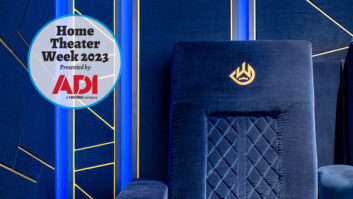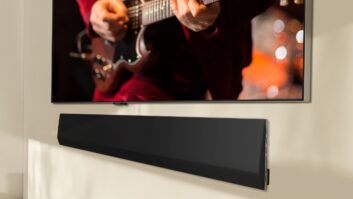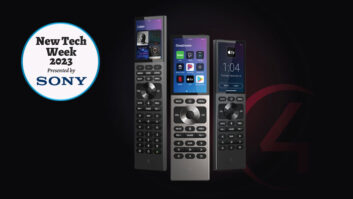Design and programming are human activities; forget that and all is lost.
Bjarne Stroustrup, designer of C++ and
author of The C++ Programming Language
and The Design and Evolution of C++,
both published by Addison Wesley
Sometimes its clever. Sometimes its cumbersome. Because of it, neat freaks can store a lifetimes worth of junk in one or two IKEA furniture systems. Thanks to it, socialites are able to create just the right party ambiancelights, music et alwith the touch of a button. The problem is that it (the solid design of a product, room, or home entertainment system) is quite intangible. Which is why it is a challenge for custom installation firms to charge money for it.
There are some businesses, such as architectural firms, that are not questioned when they charge for design, noted Adam Stone, president of D-Tools Inc., a maker of design and job costing software (www.d-tools.com). Because it is such a young industry, this isnt the case for the residential systems market. If the guy down the street does it for free, then the customer expects the guy up the street to do it for free. You would never go to an architect and say, Spec me a house, and expect it to be done for free. But anytime you bundle products and services, people angle for deals and are willing to make them.
Bryn Morrison, owner of Axiom Group LLC, a custom installation company in Ann Arbor, Michigan (www.axiomgroup.us) notes that the decreasing cost of technology overall, combined with an increasingly competitive business climate, contributes to the challenges associated with charging for design. The model used to be such that companies would do anything to get the sale because they knew they could make a living on the margin.
Since it has gotten quite a bit more competitiveparticularly for custom contractorsand the markets are getting tighter and tighter, there are more companies that are willing to drop the margin in order to get jobs, he observed. One of the reasons its difficult to charge for engineering is that people are concerned that it is an add-on, and there are people out there who are willing to do it for a lot less money.
Like C++s Stroustrup, Michael Krueger, president and owner of True Aspect, a custom installation company in Madison, Wisconsin (www.true-aspect.com) places a high level of importance on design. The design portion of systems implementation has to be truly one of the most important phases of the whole project. It all starts with the design of the system, especially with the higher end and more expensive control systems. If those are designed incorrectly, the end result will not be what was expected, he said.
Unfortunately, homeowners dont always see it that way. I think that customers have a misconception about what it actually takes to make these systems operate at the level of their expectations, Krueger added.
Part of this can be attributed to the custom installers themselves, Krueger admits. As custom installers, we do a very good job of making things easy, he observed. With the press of one button, you can make 10 different things happen at once. The customer doesnt see what is going on in the background. All they know is that they have a system that allows them to press one button, and its going to work. That is what they want, but I dont think they understand what it takes to give it to them.
Morrison strives to give higher value to the designs his company produces by using a detailed process that begins with a primer of sorts. Before I will discuss anything related with the project or the hardware that we need to buy, I will sit down and give the client a two-page summary of what they can expect when they are contracting, he explained. Morrison compares this document to the what to expect when you are expecting books used by mothers to be.
The idea is to lay out for them what the milestones in the project will be, so that I can show them a formalized set of documentation for each construction phase, and they have it in their minds that yes, they do need these things as they go forward, and they understand what its all about when it is provided.
Stone, whose entire company is based upon the detailed documentation of integration projects, emphasizes the importance of developing a solid paper trail. That is the only way you are going to make what you need to make, he said. You need to start documenting labor and all of the services you provide on the job instead of letting your margins account for all of the profits. A lot of companies just use the margins on their equipment as their profits and dont really track everything else. That is going to change rapidly. It has changed in many industries.
For long-term projects, Morrison will employ a cost-plus relationship. Particularly with larger, long-term projects that go on for more than a year, its difficult to give someone a fixed bid because so many things change; you are either killing the client with change orders or killing your own company by not being able to keep up, he said. I will explain to the client the engineering tasks I perform, the amount of time I will do them in, and then establish a cost-plus relationship with them. I think it helps to establish a level of trust, because there is no hidden number.
Krueger notes that the effort of CEDIA to offer professional design certification is a step in the right direction. The fact that someone is trying to set a standard for the industry is very important, he said. You have to have certain certifications and standardized guidelines in order to make it all viable and valuable to the customer.
Carolyn Heinze ([email protected]) works from her office in Vancouver, British Columbia, Canada.





